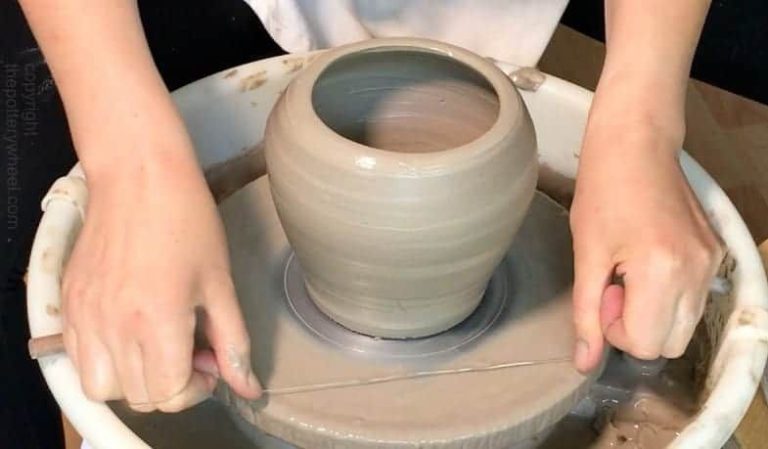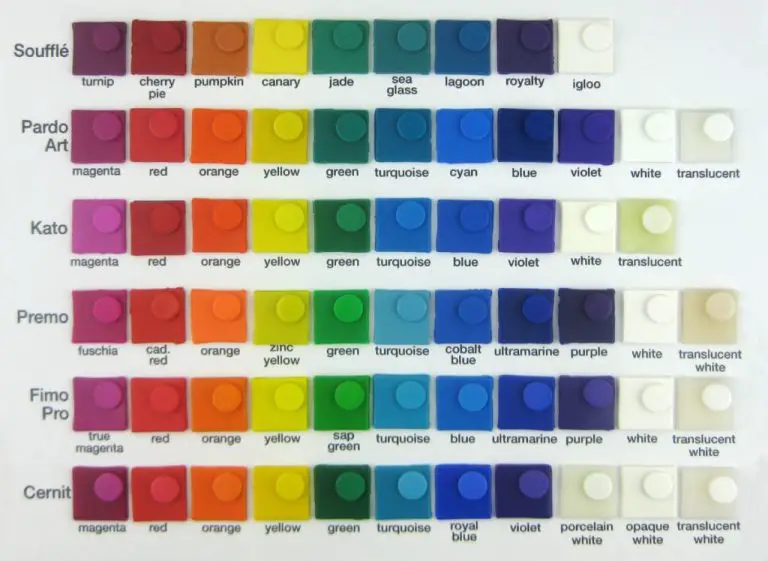What Makes Clay Clammy Crossword Puzzle Clue?
A crossword puzzle clue provides a hint or some wordplay to help solvers figure out a specific word or phrase that fits in the crossword grid. Clues are designed to be challenging but solvable through deductive reasoning, pattern recognition, general knowledge, and lateral thinking. The goal is to use logic to uncover the correct word or phrase the clue points to in order to fill in the crossword puzzle.
Each clue provides a bit of a puzzle itself that must be solved to make progress on the full crossword. Experienced crossword solvers will carefully parse the wording and structure of a clue to decode what it is really asking for. Sometimes this involves understanding wordplay like puns, while other times it requires broad knowledge trivia. Solving clues thoroughly is deeply satisfying and an important part of fully completing a crossword.
Defining ‘Clay’
Clay is a type of fine-grained natural soil comprised of particles smaller than 0.002 mm in diameter. The composition of clay is predominantly hydrous aluminum phyllosilicate minerals and other materials. While sand and silt are primarily formed of quartz, clay contains more variable minerals including kaolinite, illite, and smectite. The minerals in clay are essentially platy or needle-shaped crystals. Due to the small size and plate-like shape of clay particles, clay soil tends to be dense and have a very high surface area, leading to some of its unique physical properties.
The fine particle size and high surface area give clay a smooth, floury texture. Clays are molded and formed when wet, yet become strong, hard, and tough when dry and fired. The phyllosilicate minerals such as kaolinite contain water bound between the layers in their crystal structure. This water affects the plasticity or moldability of the clay. Clays also tend to interact strongly with water and organic solvents. Due to the net negative surface charge on clay particles, positively charged ions and molecules are adsorbed onto the surface, which impacts clay chemistry. The amount and composition of clay affects the physical and chemical properties of soils, impacting building construction, agriculture, engineering, and other fields that rely on an understanding of soil characteristics.
Defining ‘Clammy’
The word “clammy” refers to something that feels damp, sticky or moist to the touch. When you think of something as clammy, it gives you an unpleasant, uncomfortable feeling. For example, clammy hands feel sweaty or wet. A clammy day is humid and muggy. Clothes that are clammy have gotten damp, perhaps from rain or sweat.
The origins of “clammy” trace back to old English words like “clam” or “clem,” meaning sticky or viscous. It evokes the sense of sticking together, like wet clay. So clammy conveys a texture that is moist, gummy, and unpleasant to the touch.
Connecting Clay and Clammy
The word “clammy” is used to describe the texture and feel of clay, especially when wet. Clammy means sticky, tacky, moist, or damp to the touch. When clay gets wet, it develops these clammy, sticky qualities that can make it feel uncomfortable to handle.
Dry clay has a smooth, powdery texture, but add some water and it quickly becomes damp and clammy. The clay absorbs the moisture and becomes soft and malleable. As you handle wet clay, it sticks to your fingers and feels distinctly muddy and clammy.
The moisture is what activates the sticky, gluey properties inherent in the clay. So clay on its own is not clammy, but wet clay certainly develops a clammy texture. The more water clay absorbs, the wetter, stickier, and clammier it becomes. So “clay” and “clammy” go hand in hand when describing the tactile sensation of damp, muddy clay.
Crossword Puzzle Clues
Crossword puzzle clues provide cryptic hints to help solvers figure out the correct word or phrase to fill in the grid. Clues come in a wide variety of formats, from straightforward definitions to tricky wordplay. Crossword constructors aim to challenge solvers just enough to make solving enjoyable and rewarding.
The most direct type of clue is a straightforward definition of the answer word or phrase. For example, a clue like “Sticky, damp earth material” would point to the answer CLAY. More difficult clues provide indirect hints through wordplay, like rhymes, metaphors, puns, anagrams, and other tricks.
Common clue structures include:
- Rhyming hints like “Extremely parched earth stuff” for CLAY.
- Category hints like “Pottery ingredient” or “Sculpting medium.”
- Descriptions of the word’s function or purpose like “Substance for molding vases.”
- Metaphors such as “Earth’s play-dough.”
- Associated words or phrases like “Kiln dried” or “Found underground.”
The most challenging clues require solvers to unpack the wordplay and make connections between the hint and answer. Crossword enthusiasts love the “Aha!” moment when the clue finally clicks.
This Clue in Context
To understand this clay clammy crossword puzzle clue, it helps to visualize it within a sample crossword grid:
+---+---+---+---+---+---+---+---+---+---+ | | | | | | | | | | | +---+---+---+---+---+---+---+---+---+---+ | | | | | | | | | | | +---+---+---+---+---+---+---+---+---+---+ | | | | | | | | | | | +---+---+---+---+---+---+---+---+---+---+ | | | C | L | A | Y | | | | | +---+---+---+---+---+---+---+---+---+---+ | | | L | A | M | M | Y | | | | +---+---+---+---+---+---+---+---+---+---+
As you can see, the words “CLAY” and “LAMMY” intersect diagonally in the grid. This indicates that the answer we are looking for contains both “clay” and “lammy” which helps narrow down the possible solutions.
Solving the Clue
Let’s walk through the process of solving this crossword puzzle clue step-by-step:
1. Break down the clue – “What makes clay clammy” – into its key components. We have the phrase “makes clay clammy,” so we know we’re looking for something that causes clay to be damp, sticky, or slimy.
2. Focus on the word “clay.” What are some common characteristics of clay? It is dense, thick, heavy, and becomes muddy when wet. This gives us a clue that we want a word related to moisture or water.
3. Next look at the word “clammy.” Synonyms for clammy include sticky, sweaty, moist, damp, dank, and humid. We want a word that makes clay have one of those descriptive qualities.
4. Putting those clues together, we can brainstorm words associated with water or moisture that could make clay sticky, sweaty, damp, etc. Some possibilities are mud, wet, rain, soggy, soak, etc.
5. The most common word that fits the clue is “wet.” Wetness makes clay clammy or damp. So the answer to the crossword clue is likely “WET.”
6. We would then check that answer against the crossword grid to make sure it fits properly. If so, we have solved the clue!
Checking Your Answer
Once you’ve solved a crossword puzzle clue, it’s important to check that your answer is correct before writing it into the grid. Here are some tips for verifying your answer to “What makes clay clammy?” is right:
- Read the clue again carefully and make sure your solved answer logically fits the clue.
- Check that the length of your answer matches the number of boxes in the puzzle grid.
- Look at crossing letters and make sure your answer is consistent with those words.
- Try writing your answer into the grid to see if it fits correctly.
- Look for theme answers if the puzzle has one, and confirm your answer aligns.
- Use a crossword dictionary or reference resource to double-check definitions.
- Think of any alternative answers that could also work, and verify yours makes the most sense.
Taking the time to validate your answer will help catch any errors and ensure accuracy in your crossword puzzle solving. If your answer doesn’t seem quite right, revisit the clue and try to solve it again before moving on.
Improving Your Skills
Solving tricky crossword clues takes practice. Here are some tips for getting better at decoding clues:
- Read the clue carefully and look for wordplay or double meanings. Break the clue down word-by-word.
- Try writing out the clue to visualize it differently.
- Look for prefixes, suffixes, synonyms, and categories that may point you in the right direction.
- For tricky words, think of common letter patterns like “re-” or “-ing” that could help you guess.
- Consider the answer length as a hint.
- Try guessing part of the answer and working backwards from there.
- Use cross letters to help narrow down possibilities.
- Start from the words you know for sure and build outwards.
- Read aloud for puns and wordplay you may have missed.
- Brush up on word origins, meanings, and associations.
- Acquire wider cultural knowledge to have more references to draw from.
- Practice daily with crossword puzzles to sharpen your skills.
With dedicated practice over time and learning from your mistakes, you’ll find yourself becoming an expert crossword solver.
Conclusion
In summary, this crossword puzzle clue “What makes clay clammy” was an interesting one to analyze. We explored the definitions of “clay” and “clammy”, looked at how they can be connected, and discussed strategies for solving crossword clues in general. The answer to the clue is “damp” or “moisture”, as adding moisture to clay makes it clammy or sticky. Reflecting on this clue provides a glimpse into how crossword creators make use of wordplay and dual meanings to come up with tricky but solvable clues. It takes practice and experience to become skilled at deducing the intended answers, but careful analysis of each part of the clue is key. I hope this exploration provided some helpful insight into how to approach and solve this type of creative crossword puzzle clue. With the right strategies, these puzzles can be not just challenging, but also enjoyable brain teasers.



